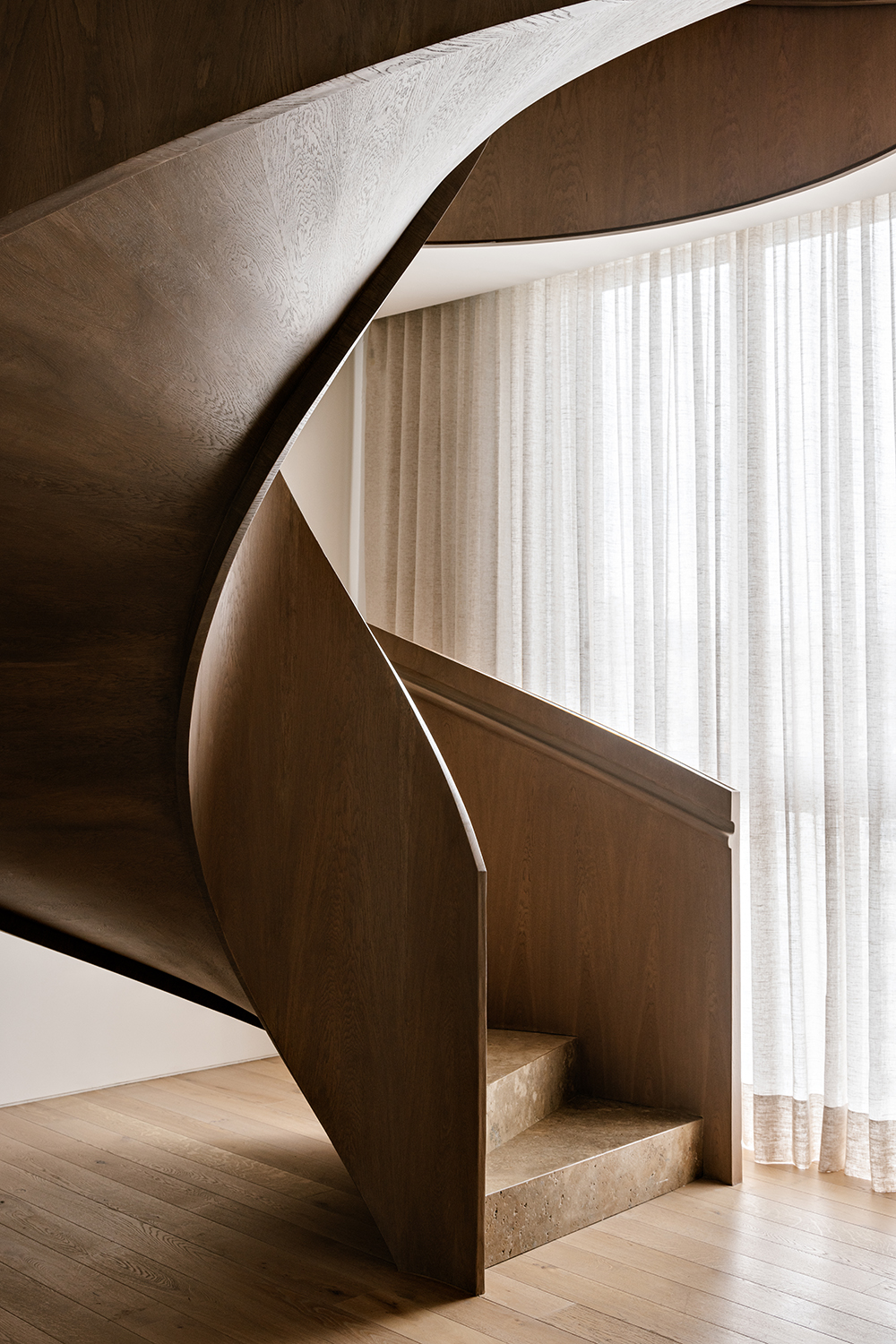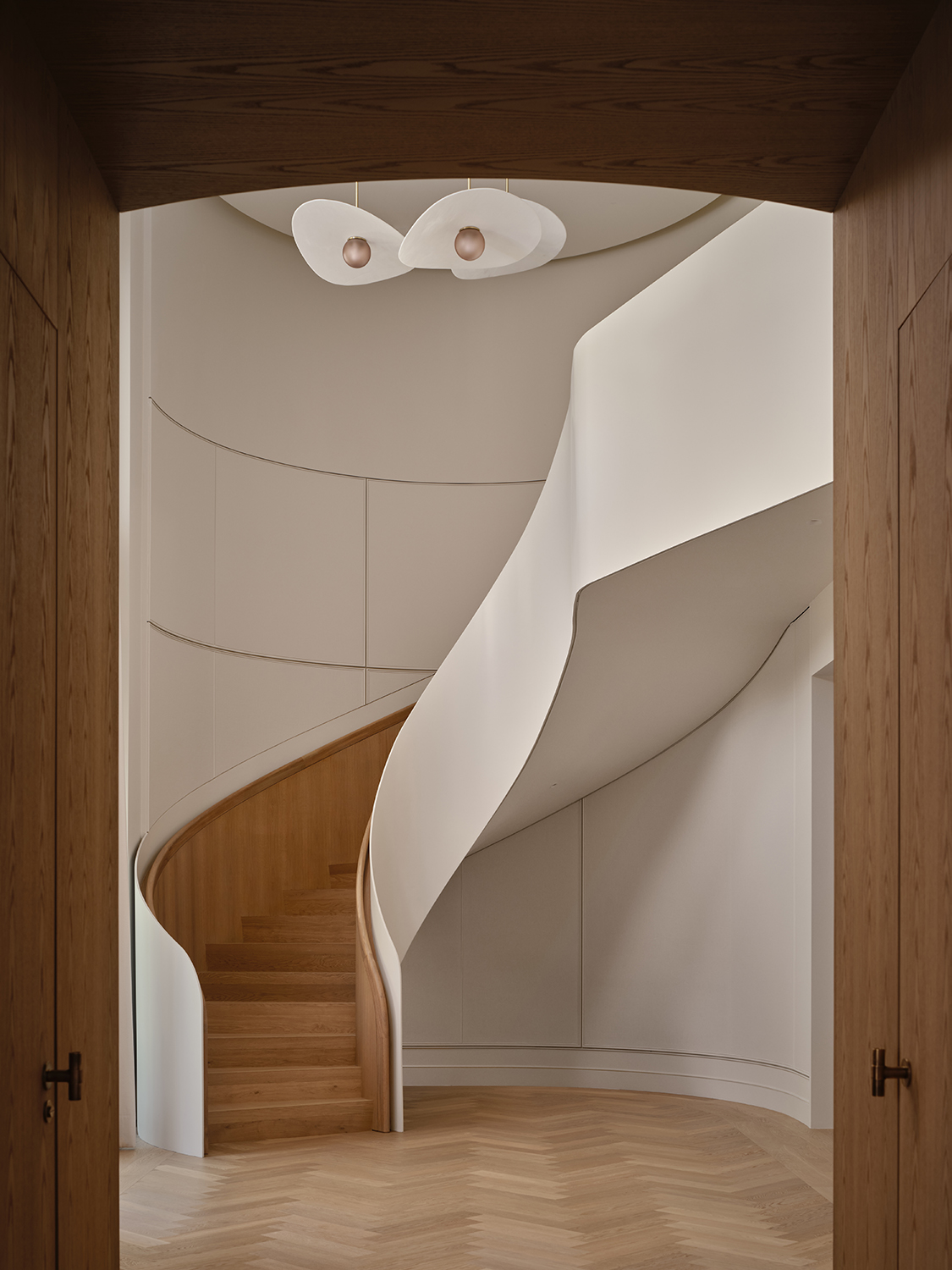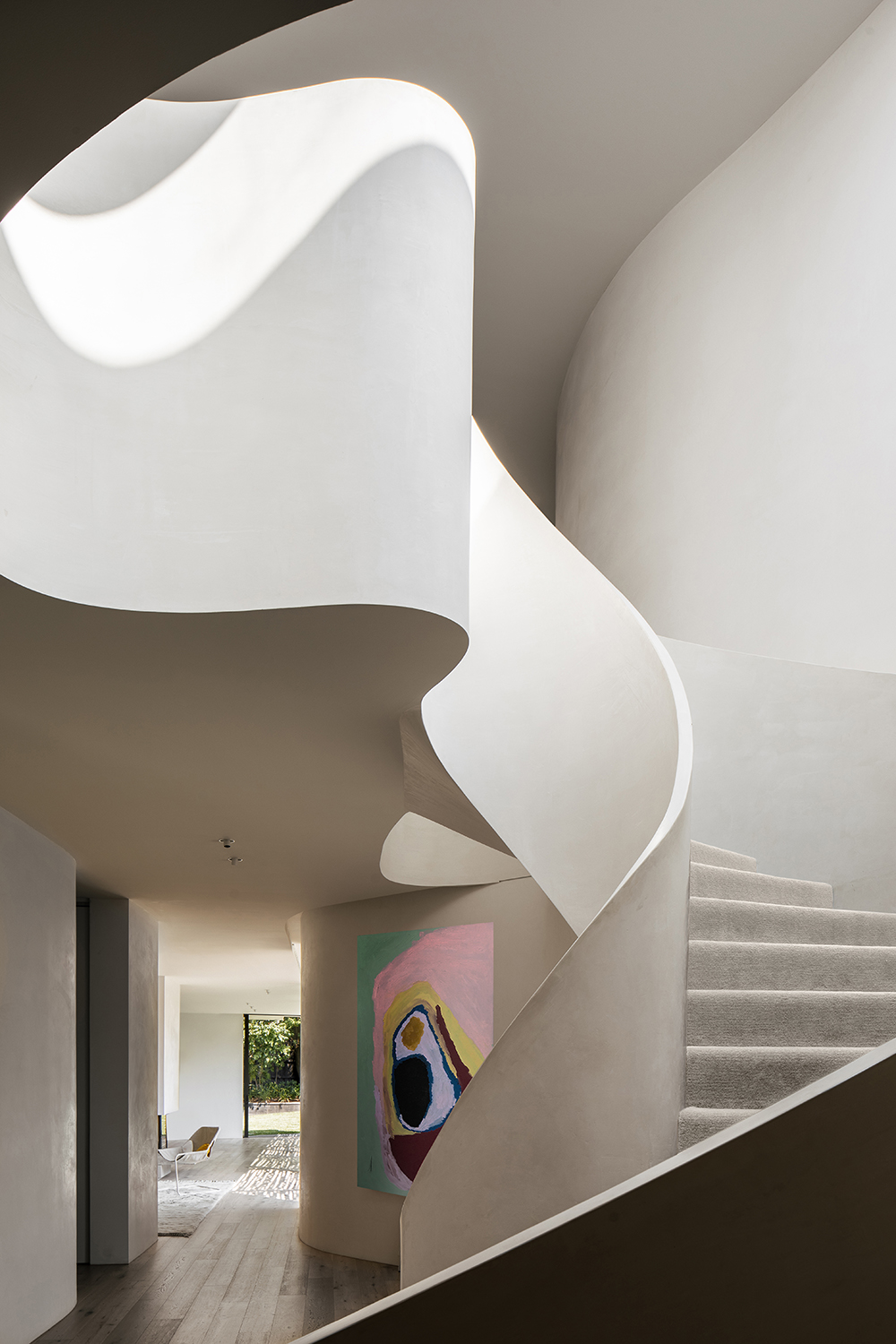'They feel so elegant!' Architects love this design feature which saves space and ups the beauty of your home
Architects are reigniting a trend for spiral staircases, creating designs that feel modern, beautiful and elegant. Here's why they're such a perfect option

The first advantage any architect might attribute to spiral staircases is efficiency: they average less floor space than a straight staircase. But saving room isn’t the only surface-level perk: in modern interiors, curving staircases can be downright stunning.
‘To me, spiral staircases are like a beautiful ribbon threading through a space – interconnecting levels, transversing space – like a piece of sculpture,’ says Australian architect Susi Leeton. There is unmistakable fluidity and beauty to this style, one increasingly relevant as designers emphasize modern curves and silhouettes throughout architecture.
Of course, today’s designs are a far cry from their centuries-old origins. Spiral staircases recall places like fortresses and churches, in medieval Europe, once used to gain an upper hand in the event of an attack; it was hard for intruders to barrel up narrow, twisting stairs with haste. Later designs traded armor for aesthetics, growing more luxurious as they took up residence in grand homes – the type of ascent worth taking slow.
‘Historically, in the UK in particular, staircases were often a statement of wealth,’ says Steve Clinch, partner at London’s Echlin. ‘They were to impress guests and show off the best craftsmanship you can afford.’ In the 20th century, he notes, spiral staircases waned in residential homes in favor of more practical staircases, but the concept is winding back up as architects unroll extraordinary designs like never before.
‘With advanced 3D modeling and CNC technologies we’re now able to use various materials — steel, wood, drywall — to create composite structures that are effectively exalted sculptures (and building code compliant!),’ says Meg Graham, Partner at Toronto’s Superkül.
From truly sinuous forms that appear seamless — constructed and concealed with plasterboard shells — to minimal steel frames that appear weightless, swirling in thin air, architects are taking curving staircases to the next level. Here are a few designs that rise to the top.
1. They're objects of beauty

Beyond the practical perks, one is pretty obvious: spiral staircases can be breathtaking. Especially when placed in a more central location, they create striking visual anchors for the home’s entire floor plan. So was the case in this multilevel beauty in São Paulo, where a spiral staircase serves as a unifying focal point that connects three separate floors.
The Livingetc newsletters are your inside source for what’s shaping interiors now - and what’s next. Discover trend forecasts, smart style ideas, and curated shopping inspiration that brings design to life. Subscribe today and stay ahead of the curve.
Think of it like a sculptural yet totally functional element that moves your eye through vertical space – a guaranteed feature that creates rhythm in interior design with a worthy, show stopping centerpiece.
2. They enhance their surroundings

Spiral staircases can hog the spotlight, which makes supporting details all the more essential to create visual flow. ‘An important thing to assess when designing spiral staircases is how they interface with the guard, the landing, the floor, and the walls, all of which are generally orthogonal and planar,’ says Kenneth Wong, an Associate at Toronto’s Superkül, who added curvilinear architecture surrounding this spiral structure to round out the design. ‘If these interfaces are not properly anticipated and designed, the result can be a spiral stair that appears ‘tacked on’ or like it’s foreign to the geometries that surround it.’
In other words, if you’re going to install a spiral staircase, it’s important to consider how it relates to its environment. ‘It’s always important to think about how curves meet straight lines and what can be done to soften and harmonize those transitions,’ says Kenneth. In Superkül’s case, the goal was to design an atrium that emphasized the organic shape of the spiral staircase itself. ‘To achieve this entailed a consideration of how to extend the curvilinearity to include the second-storey lookover as well as the walls that enclose the entire double-height space,’ add Kenneth.
3. They can channel natural light

The concept isn’t without cons. Spiral staircases can feel narrower and steeper than a straight staircase, which can make some homeowners uneasy as they step up and down. In this ribbony design, architects used a few simple tricks to ease the whole experience – with an extra bonus that buffers sound. ‘I love carpet on stairs for the acoustic advantage, softness advantage and to minimise any risk of fall,’ says architect Susi Leeton. ‘And ideally a really shallow step provides a lovely ergonomic easy movement, both up and down the stairs, so the traverse is subliminally enjoyable.’
In Susi’s design, a well-placed skylight also helps to channel natural light to the main floor. ‘Spiral stairs feel so elegant and graceful to traverse levels and create gorgeous double height voids where skylights over can create shimmering, changing light throughout the day,’ she says. ‘The light of a skylight above a spiral stair is an added advantage to create a sense of poetry in the heart of the home.’
4. They create flow

For an industrial and durable design, you’ll often find spiral staircases rendered in metals (think steel and aluminum). But a much softer approach (strong in its own right) takes shape with this wooden staircase. ‘Timber is a great choice for spiral staircases due to the warmth of the material, its relative ease in manipulation to create interesting shapes and the ability to show off great craftsmanship,’ says Steve Clinch. ‘There is something enduring about the appeal of handcrafted wood that has been with us since the origin of our species.’
Picking the right material for your design leads back to the heart of the spiral staircase, and its ability to create flow. “They allow you to move from one floor to another in a natural path, rather than dead straight lines and abrupt right angles,” adds Steve, noting how timber can help emphasize an organic transition up and down a building. “When you carefully consider the materials alongside this, you can make the movement from one floor to another feel continuous and gentle.”
5. They save space

Vertical space wasn’t an issue in this luxuriously tall bedroom. But saving floor space was paramount to create access to a mezzanine with a second level of wardrobes (let’s call it a walk-up closet). ‘The reason why we proposed the spiral staircase in this particular project is due to limitations of floor area, yet we needed to achieve vertical movement to the mezzanine,’ explains Joseph Wong of Singapore’s JOW Architects of their tightly constructed design. Also ideal for a lofted space, a spiral staircase can maintain a small footprint with a sinuous feel – form and function in balance.
And while spiral staircases can make a strong statement, Joseph chose a minimal steel frame to create a solid structure without too much visual material – a direct result of new manufacturing innovations. ‘We think spiral staircases have evolved and will continue to evolve due to development in building materials and construction technology, from stone materials and iron in the past to concrete in the present,’ adds Wong. ‘And moving forward, there will be aluminum casted or 3D printed kits-of-parts to form these spiral staircases.’
6. they allow for more storage

It’s not uncommon to spot spiral staircases in unused corners, making their small footprints even more efficient. But pulling this particular staircase away from the corner actually created more functional space in the home’s open plan kitchen. ‘The client wanted to maximize the storage in the kitchen, so the staircase was moved from the original position in the corner to an intermediate one, which finally makes the visual effect of the staircase much more impressive,’ says Carlos Tomás, founder of Madrid’s EstudioReciente.
Of course, the best place to install your staircase is subjective – and they may not have a place in everyone’s heart. “Not all spaces, not all customers are ready to use them in their homes,” admits Carlos. “We have proposed them in several projects and many times clients have rejected them because of their strong presence, or because of other more conventional variables. In this project we were very lucky because the clients accepted it and loved it from the first moment we proposed it in the first sketches of the project”
How do you design a spiral staircase?
To design a spiral staircase you need to work with pros who understand parametric software. Some of today’s spiral staircases are designed like seamless, unfurling curves with forms and sinuous lines so smooth, they appear like computer renderings – and to that end, the innovative use of 3D modeling and parametric software has become an essential tool in creating such flawless, continuous curves. This was the case for Toronto design studio Superkül, which used a parametric software called Grasshopper to pull off the design. “Grasshopper allowed us to draw and refine an undulating design in three dimensions and communicate that design to our clients and, crucially, to our fabrication partners – and other trades – who were then able to translate it into material requirements and assembly logistics,” says associate Kenneth Wong.
What does all of this mean? Well, this type of curving staircase isn’t exactly a DIY project. “When a client is contemplating doing a custom spiral stair, there’s no question that it’s valuable to engage architects who have knowledge of parametric design and consider the less glamorous elements, like the placement of wall grills and electrical outlets, which can often ruin the integrity of a space if they are not approached holistically as part of the overall design,’ stresses Kenneth.
Keith Flanagan is a New York based journalist specialising in design, food and travel. He has been an editor at Time Out New York, and has written for such publications as Architectural Digest, Conde Nast Traveller, Food 52 and USA Today. He regularly contributes to Livingetc, reporting on design trends and offering insight from the biggest names in the US. His intelligent approach to interiors also sees him as an expert in explaining the different disciplines in design.